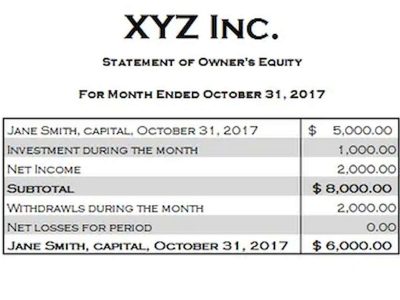
As a best practice, some organizations will complete all in-progress work prior to the end of a reporting period, so that they do not have to account for it as part of their month-end closing activities. In supply-chain management, work-in-progress (WIP) refers to goods that are partially completed. This covers everything from the overhead costs to the raw materials that come together to form the end product at a given stage in the production cycle. In accounting, WIP is considered a current asset and is categorized as a type of inventory. Work-in-process (WIP) inventory refers to the materials that are in various stages of production within a manufacturing or production environment, but are not yet finished goods ready for sale. WIP inventory exists between the raw materials stage and the completed product stage.
Work In Process Inventory Formula WIP Inventory Definition

It is calculated as the sum of the total costs of raw materials, labor, and overheads used in manufacturing for the period. Once production is complete, the total cost of the completed items is moved from the WIP Inventory account to the Finished Goods Inventory account. The costs remain on the balance sheet as an asset until the product is sold to a customer. At the point of sale, the cost is transferred from the Finished Goods Inventory account to the Cost of Goods Sold (COGS) account, which is an expense on the income statement. To determine the value of partially completed goods at the end of an accounting period, companies use a standard formula.
How does moving completed work into storage help with Lean work processes?
A family who buys a fixer-upper house and gradually remodels it might describe it as a work in progress.
Related Terms
Join millions of self-starters in getting business resources, tips, and inspiring stories in your inbox. Start your free trial with Shopify today—then use these resources to guide you through every step of the process. While they seem similar, they can convey slightly different stages or aspects of ongoing work or events. In some sense, in process seems to make logical sense, as does in progress, but it is comparatively rare to hear anyone use this term in speech or writing. In progress also appears in the phrase work in progress, which is a noun phrase that denotes something that is still being finished. In progress is an adverb phrase that refers to something that is not yet complete.
WIP inventory example #2
Learn how the costs of partially finished goods are calculated and reported on a company’s financial statements. ‘Work in progress’ refers to the ongoing construction of complex, long-term assets (such as raw supplies that can be transformed into finished products over a long period of time). Work in process is used to report inventory items that are currently being constructed but are not yet done. Work in progress, on the other hand, is usually used to report capital assets on longer schedules that are not yet completed. Work in process items usually transfer to inventory, then are used to determine cost of goods sold. Work in progress is usually reported as a capital asset and depreciated when completed.

Accounting for WIP inventory in the balance sheet

Once goods are finished, the costs move from the WIP account to the finished goods inventory account. When the products are sold, the costs are recorded as the cost of goods sold (COGS) on the income statement. Effective production scheduling can help minimize WIP inventory by ensuring a smooth flow of materials through the production process. This may involve balancing workloads across different production stages and prioritizing orders based on due dates and resource availability. Kanban is a visual system for managing work assets = liabilities + equity as it moves through the production process.
- If you don’t have an ending inventory balance to include, simply subtract your cost of purchases.
- Manufacturing overhead encompasses all other production-related costs that are not directly tied to materials or labor.
- Managing WIP inventory efficiently is crucial for optimizing your fulfillment process.
- For instance, auditors might evaluate whether the company’s ERP system accurately tracks and reports WIP data.
- Work in progress is often used in industries where each product is unique, such as a building, and time to completion is longer—weeks, months, even years.

Regularly reviewing WIP enables you to catch potential quality issues early on. By addressing these problems before they escalate, you can avoid costly rework and ensure that your final products meet the highest standards. Taking time to classify WIP inventory in a warehouse waiting to be assembled might seem tedious, but it’s crucial for monitoring and improving your supply chain and inventory control. Generally, most companies strive to reduce the amount of work in process time that inventory spends at the work in progress (WIP) stage. Take a look at this graph to explore the usage trends of two phrases over the past two centuries. While both phrases are gradually declining in use, “in progress” clearly stands out as the more popular choice.
strategies for effective WIP Inventory management
- Getting it right means smoother production process, better cost control, and fewer headaches when balancing inventory and finances.
- By understanding the amount of work in progress, teams can make informed decisions, allocate resources appropriately and optimize workflow for better efficiency.
- These tools provide a clear, real-time view of the production process, allowing teams to quickly identify bottlenecks and areas for improvement.
- WIP stands for “work in progress” and refers to any partially complete inventory not yet ready to be sold to customers.
- To enhance your understanding, let’s explore several examples of the phrase used in different sentences.
In the end, these benefits will result in increased profits and a competitive edge in today’s marketplace. Work-in-process inventory accounts for goods that are partially through the production process; they’re no longer raw materials, but they’re also not finished. The work in process inventory formula consists of the ending work inventory for that period, and the beginning work inventory for the next one. Once you’ve determined your beginning WIP inventory and you calculate your manufacturing costs as well as your cost of manufactured goods, you can easily determine how much WIP inventory you have. Some companies do a physical count of their WIP inventory to determine the value based on the current stage of each unit in the manufacturing process. This eats up huge amounts of valuable time and distracts your team from doing higher-level work.
Manufacturing cost
WIP inventory directly affects Cost of Goods Sold (COGS) and overall profitability. No, the correct phrase is “work in progress.” It refers to tasks that are currently being Bookkeeping for Consultants worked on. Think of “in process” as a step-by-step procedure and “in progress” as something currently happening. We’ve got a whole library of content dedicated to explaining confusing words and phrases in the English language. To recap, we learned that both phrases mean the same thing, although the more common and preferred phase is ‘in progress.’ Therefore, you should aim to use that one. We’ll answer that in detail below, plus teach you the meaning and how to use both in a sentence correctly.

